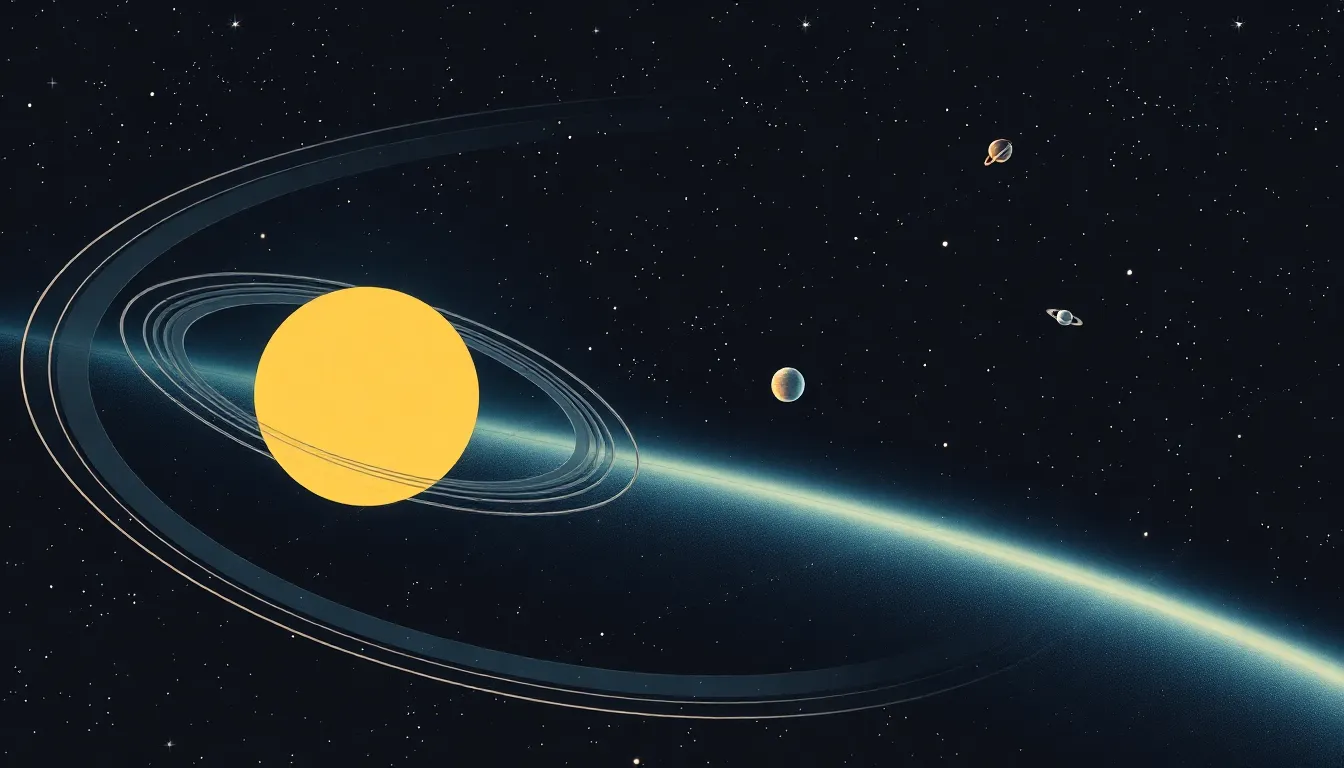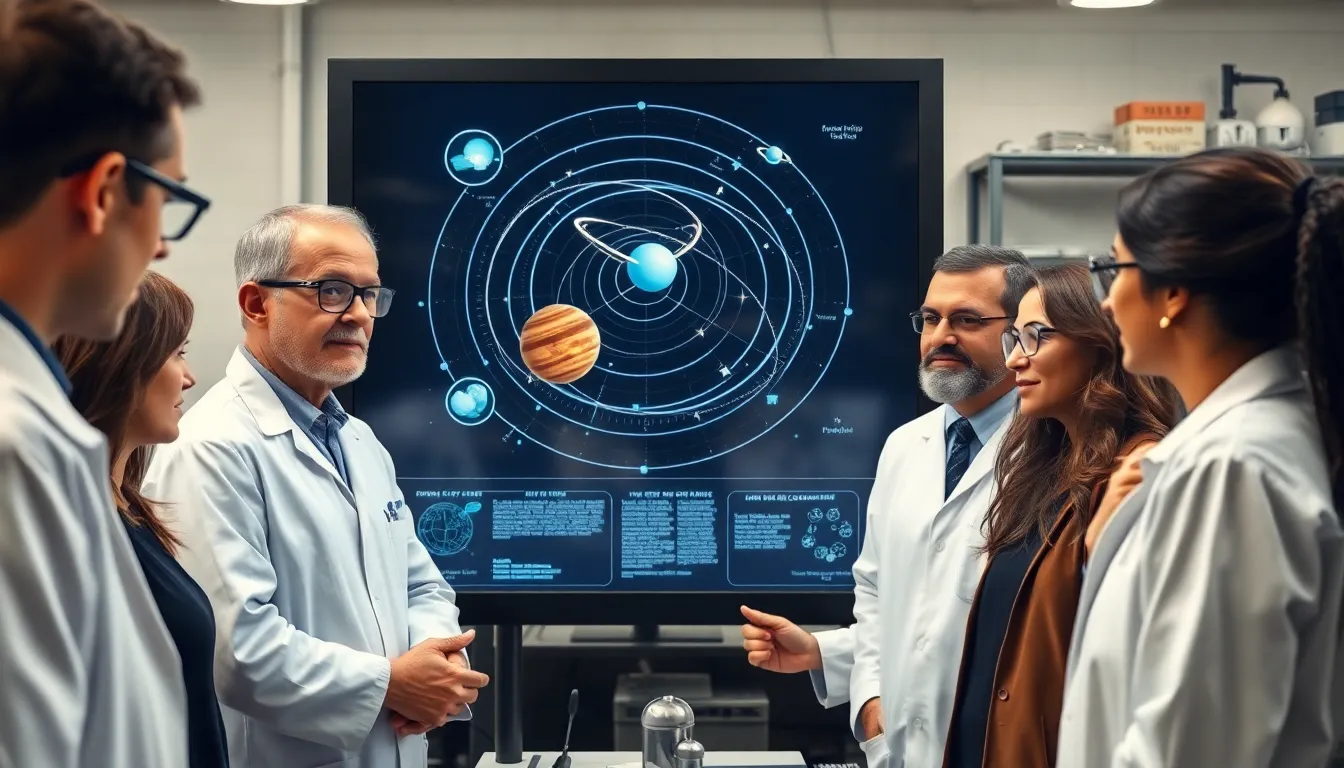Ever wondered how spacecraft dance through the cosmos without stepping on each other’s toes? Welcome to the fascinating world of orbital mechanics, where gravity is the DJ and physics sets the rhythm. This branch of celestial navigation isn’t just for rocket scientists; it’s the secret sauce behind every satellite launch and interplanetary mission.
Table of Contents
ToggleOverview of Orbital Mechanics
Orbital mechanics studies the motions of objects in space under the influence of gravitational forces. This discipline applies Newton’s laws of motion and universal gravitation to various scenarios, including satellite orbits and trajectories of spacecraft. Distinct types of orbits exist, such as geostationary and polar orbits. Each type serves specific purposes.
Satellites in a geostationary orbit maintain a fixed position relative to the Earth’s surface. They achieve this by orbiting at an altitude of approximately 35,786 kilometers. Polar orbits, conversely, allow satellites to pass over the poles and cover the entire surface of the Earth over time. This capability benefits Earth observation missions that require a global perspective.
Calculating orbits requires understanding several elements. Parameters like eccentricity determine the shape of an orbit. Velocity also plays a critical role, dictating how fast an object must travel to maintain its path without falling back to Earth or drifting into space. The two-body problem serves as a foundational concept, providing a simplified view of orbital dynamics.
Further exploration involves multi-body problems, which introduce additional gravitational influences. Space missions often navigate complex trajectories, accounting for perturbations caused by other celestial bodies. These calculations enhance mission planning and execution, ensuring success in launching spacecraft to destinations like Mars or beyond.
Gravitational assists illustrate real-world applications of orbital mechanics principles. This technique utilizes the gravity of celestial bodies to change a spacecraft’s speed and direction with minimal fuel consumption. Thus, understanding the intricacies of orbital mechanics proves vital for anyone involved in space exploration or satellite technology.
Fundamental Concepts of Orbital Mechanics

Orbital mechanics relies on several core principles that explain how celestial bodies move through space. Understanding these concepts forms the foundation for comprehending complex orbital dynamics.
Kepler’s Laws of Planetary Motion
Kepler’s laws elucidate the motion of planets around the sun. The first law states that planets follow elliptical orbits, with the sun positioned at one focus. Second, the rate of speed varies; planets travel faster when closer to the sun. The third law establishes a relation between the time a planet takes to orbit and its average distance from the sun. These rules illustrate predictable patterns in planetary motion, crucial for mission planning and satellite deployment.
Newton’s Law of Universal Gravitation
Newton’s law describes the gravitational force between two masses. This force is directly proportional to the product of their masses and inversely proportional to the square of the distance between them. Such principles explain how objects are attracted to one another in space. For example, Earth’s mass keeps satellites in orbit, while the moon’s gravity influences ocean tides. This law serves as a backbone for various calculations in orbital mechanics, allowing the prediction of trajectories and movements of both spacecraft and celestial bodies.
Types of Orbits
Different types of orbits exist, each serving unique functions in space missions and satellite placements. Understanding these orbits supports efficient navigation and operational capabilities.
Circular Orbits
Circular orbits maintain a constant altitude and velocity. Objects in this orbit move at a uniform speed around a central body, such as Earth. Satellites in circular orbits experience a consistent gravitational pull, which stabilizes their trajectory. These orbits are ideal for communication satellites, as they provide uninterrupted signals to designated areas. For instance, a geostationary satellite operates at approximately 22,236 miles above Earth, enabling real-time communication.
Elliptical Orbits
Elliptical orbits vary in altitude and speed throughout the orbit. These orbits have two focal points, with one typically representing the center of the celestial body. Satellites in elliptical orbits travel faster when closer to the planet and slow down when farther away. This type of orbit suits missions requiring extensive coverage, such as Earth observation satellites. An example includes polar orbits, which allow satellites to pass over the entire surface of the Earth as the planet rotates beneath them.
Parabolic and Hyperbolic Orbits
Parabolic and hyperbolic orbits facilitate escape trajectories from gravitational influence. In a parabolic orbit, an object has just enough velocity to escape but doesn’t return, like a spacecraft leaving Earth’s atmosphere. Hyperbolic orbits occur when an object approaches a celestial body at high speed, allowing it to swing by and continue into deep space. Comets often exhibit hyperbolic trajectories, indicating they are visitor bodies from other parts of the solar system.
Applications of Orbital Mechanics
Orbital mechanics plays a crucial role in various applications, particularly in the design and execution of space missions.
Space Missions and Satellites
Space missions rely heavily on precise calculations of orbits to ensure successful navigation. Satellites utilize specific orbital types to fulfill their designated functions. Communication satellites operate in geostationary orbits, allowing consistent coverage over specific regions on Earth. Earth observation satellites prefer polar orbits, enabling them to capture images of the entire surface over time. These strategically chosen orbits contribute to data collection and signal transmission. Furthermore, interplanetary missions leverage complex trajectories to minimize fuel use, gaining efficiency through techniques like gravity assists.
Astrodynamics in Space Exploration
Astrodynamics exemplifies the application of orbital mechanics in space exploration. Engineers design trajectories using mathematical models to predict spacecraft movements under gravitational influences. Navigation systems depend on understanding orbital elements and perturbations caused by celestial bodies. Rockets require accurate calculations to escape Earth’s gravity and reach desired orbits or destinations. Scientific missions, such as rover landings on Mars, necessitate precise entry, descent, and landing calculations for safety and success. Ultimately, astrodynamics ensures that spacecraft reach their targets while adhering to mission constraints.
Challenges in Orbital Mechanics
Orbital mechanics faces several significant challenges that impact space missions and satellite operations.
Orbital Debris and Its Impact
Orbital debris poses a serious threat to spacecraft and satellites in Earth’s orbit. The accumulation of defunct satellites, spent rocket stages, and fragments from collisions increases the risk of catastrophic impacts. Over 27,000 pieces of debris larger than 10 centimeters are tracked by agencies worldwide, threatening operational satellites and future missions. Collisions with even tiny particles can damage instruments or alter orbits, complicating mission objectives. Developing effective debris mitigation strategies and implementing regulations becomes essential for ensuring safety in space.
Gravity Assist Maneuvers
Gravity assist maneuvers serve as critical techniques for spacecraft to gain speed and alter trajectories efficiently. This method uses the gravitational pull of celestial bodies, such as planets or moons, to achieve desired velocities without excessive fuel consumption. For example, the Voyager missions utilized gravity assists from Jupiter and Saturn to reach the outer planets, significantly reducing travel time and energy expenditure. Accurate calculations of approach angles and velocities are key for mission success in executing these maneuvers. Enhancing our understanding of orbital mechanics leads to more effective use of gravity assists, unlocking possibilities for distant space exploration.
Orbital mechanics is a cornerstone of modern space exploration and satellite technology. Its principles guide every aspect of spacecraft navigation ensuring missions are executed safely and efficiently. As humanity pushes further into the cosmos the understanding of these mechanics becomes increasingly vital.
The challenges posed by orbital debris and the complexities of multi-body gravitational influences highlight the need for ongoing research and innovation. By mastering these concepts engineers and scientists can design missions that not only reach distant destinations but also safeguard the future of space operations.
As interest in space continues to grow the relevance of orbital mechanics will only expand solidifying its role in shaping the next era of exploration.







